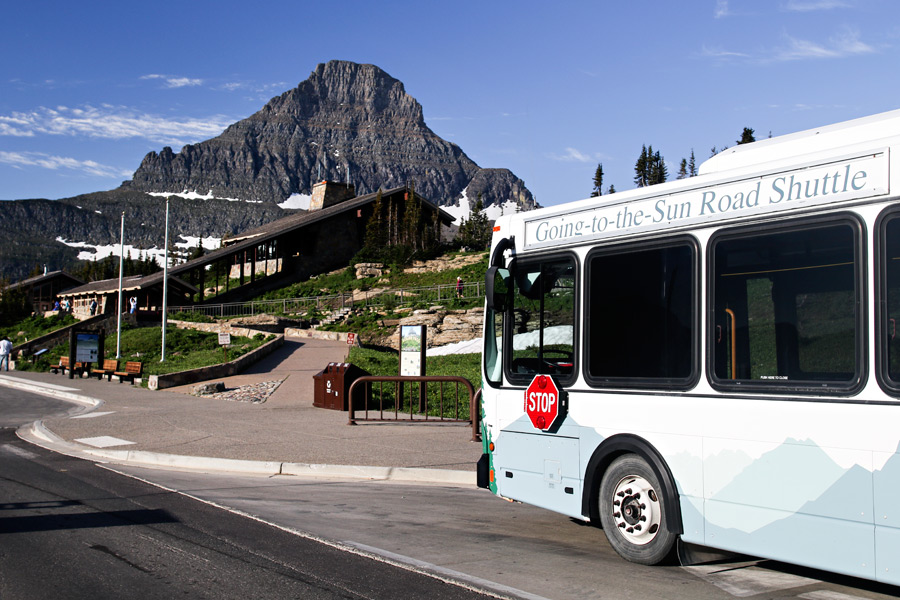The Flathead County Commission is scuttling a deal that since 2007 has provided a free shuttle service in Glacier National Park, ending its partnership in a popular transit program that has become a lifeline for park officials grappling with skyrocketing visitation and vehicle congestion along the Going-to-the-Sun Road.
The unanimous decision by commissioners on Wednesday to terminate the Glacier Transit Cooperative Agreement, effective Dec. 31, is poor timing for park administrators as they reflect on yet another year in which visitation topped 3 million people, a new normal that is stressing park infrastructure and creating a monumental task for those charged with managing the land and resources serving as the backbone of the Crown of the Continent.
In a letter to Glacier Superintendent Jeff Mow, the Board of Commissioners laid out its concerns and said it would consider withdrawing the termination if park officials could craft a solution.
Meanwhile, Glacier Park is seeking to finalize a complex management plan for the alpine highway that charts a stunning point-to-point course through the heart of the park, offering motorists a glimpse of the region’s wild interior and providing them access to its most popular points. At the center of that plan is how to better manage a Sun Road corridor that has become choked with visitors, which the shuttle system has both helped alleviate and exacerbated.
As visitation spikes and park resources chafe under budget constraints, visitors have become increasingly reliant on the fleet of free shuttles, which ferry hikers and sight-seers from the popular Lake McDonald Valley near West Glacier across the Continental Divide to St. Mary and Many Glacier, as well as to points in between.
Parking lots regularly fill to capacity by early morning, while the shuttles continue to deposit visitors throughout the day, forcing managers to assess changes to the system.
However, according to commissioners, the transit system itself has become unsustainable as ridership outpaces its capacity, funding remains static and taxpayers subsidize the costs of maintenance operations. According to figures provided by the commissioners, visitors to Glacier Park who use the shuttle has grown from 138,000 riders in 2012 to 255,000 riders in 2019, with passengers often waiting two or more hours for service.
The uptick in use combined with an outmoded fleet of vehicles dating back to 2006-2009, a dearth of qualified drivers seeking competitive wages, and uncovered costs to Flathead County for managing the system led commissioners to make the decision, according to Commissioner Randy Brodehl.
“Although discussions with Glacier National Park continue, an acceptable resolution has yet to be reached,” according to a county press release. “Commissioners remain hopeful the Park will address the County’s concerns, but have taken the necessary step to end the Agreement should the ongoing discussions fail.”
The Glacier Transit Cooperative Agreement was first formed in 2007 between Glacier National Park, the Montana Department of Transportation and Flathead County’s public transit system, Eagle Transit. The agreement set forth the terms to create a free shuttle service along the Going-to-the-Sun Road, funded by the park and operated by Eagle Transit.
“Since 2007 Flathead County has partnered in good faith with Glacier National Park to provide a valuable service that helps the Park manage visitor flow and helps visitors enjoy their experience in the Park, but the system as it stands is broken and county taxpayers have paid a high cost for little benefit to our communities,” Brodehl wrote in a statement. “We hope the Park will work with us to resolve our concerns and, moving forward, commit to an integrated transit system that would truly benefit all parties.”
For its part, Glacier National Park Superintendent Jeff Mow said the park would pursue alternative options for next season’s shuttle service, which typically services the park in July and August.
“We take seriously Flathead County’s concerns and thank them for their hard work and dedication to partnering with us to provide the service for the past thirteen years,” Mow said in a statement. “Learning about the challenges our partner faced made us realize that we need to explore new models for our transit-system operations. The cancellation of the agreement provides us with an opportunity to develop the next generation of the system. Now is the time to reset and think about what makes sense for the future.”
According to Mow, the National Park Service established the park’s transit system to reduce vehicle congestion during the years-long rehabilitation of the Going-to-the-Sun Road that began in 2007, which is now complete.
The park remains engaged in a planning effort through its Going-to-the-Sun Road Corridor Management Plan that explores opportunities to expand its shuttle system, Mow said.
As a major economic driver, Glacier National Park draws scores of visitors to the Flathead Valley and businesses in gateway communities are sure to feel an impact if an alternative is not realized.
Joe Unterreiner, president and CEO of the Kalispell Chamber of Commerce, said he remains hopeful that Flathead County and Glacier National Park can reach an agreement on shuttle transit service for the 2020 season.
“As the official tourism agency for the City of Kalispell, we are concerned about the negative impacts the elimination of this shuttle service will have for visitation and accessibility to our largest tourism draw,” Unterreiner said.
